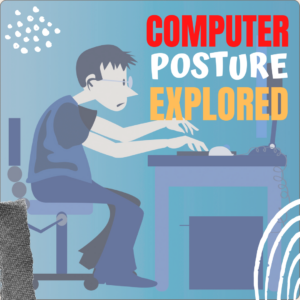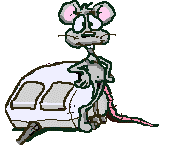Here’s a great article on a topic I don’t talk about enough–proper posture at the computer. Written by “Karen Weaver a 3rd grade elementary school teacher and author of the upcoming children’s book “The Magic Pencil”, it covers all the basics. I think you’ll enjoy it:
Good Sitting Posture in Front of the Computer Explored
 Are your kids slouching all the time especially when in front of the computer? You are not alone.
Are your kids slouching all the time especially when in front of the computer? You are not alone.
A recent study involving almost 600,000 children and adolescents found that over 65.3% have poor posture, while 3.7% had to be referred to radiography for intervention.
In this post, we tackle one of the major culprits of poor posture in children, what its effects are, and what you can do about it as a parent.
Technology and Bad Posture in Kids
Kids’ routines nowadays are filled with technology that can harm their posture and development if left unsupervised. Watching TV, browsing the Internet, checking social media, playing video games, and now, even remote learning all require using a device.
Think about how your child looks like when he’s doing any of the said tasks. He’s probably either lying down, lounging on the sofa with legs crossed, or sitting with his head tilted forward to look closely at his gadget.
One study showed the effects of habitual computer use in adolescents. It found that increased computer use led to increased head and neck flexion in male teens. Meanwhile, females showed an increased lumbar lordosis.
We used to associate slouching and a hunchback with old age or depression. Now, a majority of children and teenagers have poor posture due to the effects of technology. It’s so rampant that the condition has already been dubbed as “text neck” by the medical community.
The Negative Effects of Bad Posture on Kids Development
The negative effects of bad posture on children are long-lasting and can be divided into three categories.
- Muscular Problems – The ill effects of bad posture start with poor balance, stiffness, and muscle aches.
- Structural Problems – If your child continues to have poor posture throughout his developmental years, changes to the skeletal system can happen. This includes postural kyphosis and structural scoliosis.
- Functional Problems – When postural problems aren’t addressed early on, it can actually change how your child’s body works. The joints won’t be moving in proper alignment, causing bone spurs, spinal disc herniation, and degenerative disc disease, and early arthritis. A hunched back is also associated with digestive problems and an elevated risk of heart disease since the organs in the upper body get compressed.
Recommended Sitting Posture in Front of the Kids
Since the effects of poor posture on kids can be so drastic, it’s crucial to educate them about proper posture. Of course, it’s just as important to be a good role model by practicing what you preach.
The correct sitting posture for children follows the 90-90-90 rule. This guideline has the back straight, making a right angle to the thighs. The thighs, which are flat on the seat, and knees form a 90° angle. Finally, their feet should rest flat on the floor, creating a right angle with their shins.
To follow the 90-90-90 rule, however, your child will need an ergonomic workstation. Since your child is still growing, it goes without saying that height-adjustability is a must-have feature.
When your child’s desk is too high, his arms will be in an awkward position. Too low and he’ll have to bend down to look at what he’s doing.
Taking these into account, a height-adjustable desk is very useful in optimizing your child’s workstation for his size.
The Reality on Healthy Sitting for Kids
Despite the 90-90-90 rule, it’s natural for kids to fidget and sit in different positions. The key is to teach your kids to avoid slouching.
When he’s console gaming or watching TV, encourage him to put a small pillow at his lower back to help him maintain proper posture. Remind him to also avoid sitting with legs crossed.
If your kid often uses a laptop to study, get him a laptop tray so he can raise the display to eye level. Otherwise, he’ll be tilting his head forward to get a closer look at the screen.
The same goes when he’s using a computer. The monitor should be an arm’s length away with the top part of the screen at eye level.
More importantly, encourage your kids to take a break every 30 minutes to stretch and change positions. Staying in one position for too long can be just as harmful as poor posture in the long run.
Conclusion
In this digital era, it’s simply unavoidable that your kids will have to spend some time in front of the computer to play and study. What you can do as a parent is to educate your children about the possible ill effects of poor posture and remind them to avoid slouching.
If your child still seems to be slouching despite your gentle reminders, consider consulting a pediatrician. It might be a congenital spine deformation like kyphosis and scoliosis that’s causing your child’s poor posture.
Author’s Bio
Karen Weaver is a 3rd grade elementary school teacher and author of the upcoming children’s book “The Magic Pencil”, available on Kindle starting September 2021.
Posters for keyboarding posture:
Jacqui Murray has been teaching K-18 technology for 30 years. She is the editor/author of over a hundred tech ed resources including a K-12 technology curriculum, K-8 keyboard curriculum, K-8 Digital Citizenship curriculum. She is an adjunct professor in tech ed, Master Teacher, webmaster for four blogs, an Amazon Vine Voice, CSTA presentation reviewer, freelance journalist on tech ed topics, contributor to NEA Today, and author of the tech thrillers, To Hunt a Sub and Twenty-four Days. You can find her resources at Structured Learning.







































A good article, Jacqui. I am so bad at moving every 30 minutes.
I tend to focus more on speed and accuracy than posture–definitely shouldn’t!